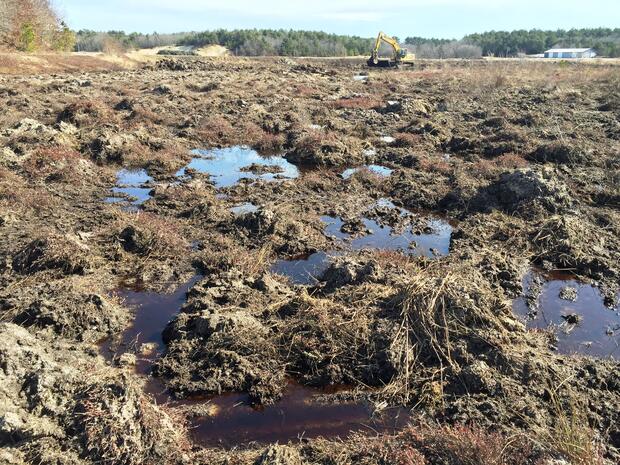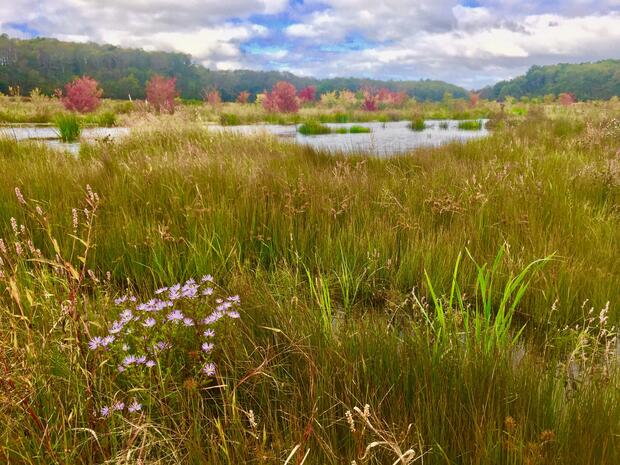Ecological restoration is defined as the ‘process of assisting in the recovery of an ecosystem that has been damaged, degraded, or destroyed” (Society for Ecological Restoration). In this case, wetland recovery is “assisted” by restoring natural hydrology through a variety of methods, as described below.
How are wetlands degraded?
Common farming practicing such as sanding, ditching, and water control structures alter the natural movement and storage of water on the land. The sand layer separates the ground surface from the water table. The result can be a site that is drier than the historic wetland that once existed, and waterways that are disconnected from upstream and downstream areas.
How is restoration accomplished?
Sand removal is the most obvious way to restore historic wetland conditions on a cranberry farm. However, it is rarely possible due to the high costs of excavation and hauling. Instead, a variety of methods are typically used together to help saturate the sand layer and set the stage for wetland recovery. These actions include ditch plugging and filling, bog surface roughening (i.e. breaking apart the cranberry mat), reconstructing stream channels and adding large wood (i.e. to slow the movement of water), grading to connect surrounding uplands, and removing water control structures. Native wetland plants grow quickly from buried and dormant seed. If done right, little future human maintenance is needed. Only patience is required as the site heals and turns back into healthy wetlands over the following years.
What are the steps?
An assessment phase is first performed to understand changes to the land from farming, including measuring the depth of sand over native wetland soils. Ground penetrating radar or probing may be used to identify the location and depth of underlying peat. The next phase is engineering design, which includes the development of project plans, modeling (if necessary), and quantification of earthwork volumes for future contracting. Environmental permits must then be obtained from local, state, and federal agencies. Once sufficient funds are raised and a contractor is hired, the next step is implementation, which includes measures to limit short-term environmental impacts. Long-term environmental benefits are the goal, and monitoring is used to track the restoration trajectory of a site.
DER can share examples of restoration design plans, project permits, cost estimates, and more to help landowners understand the process. We can also offer tours of completed project sites to show what the final outcome looks like.

